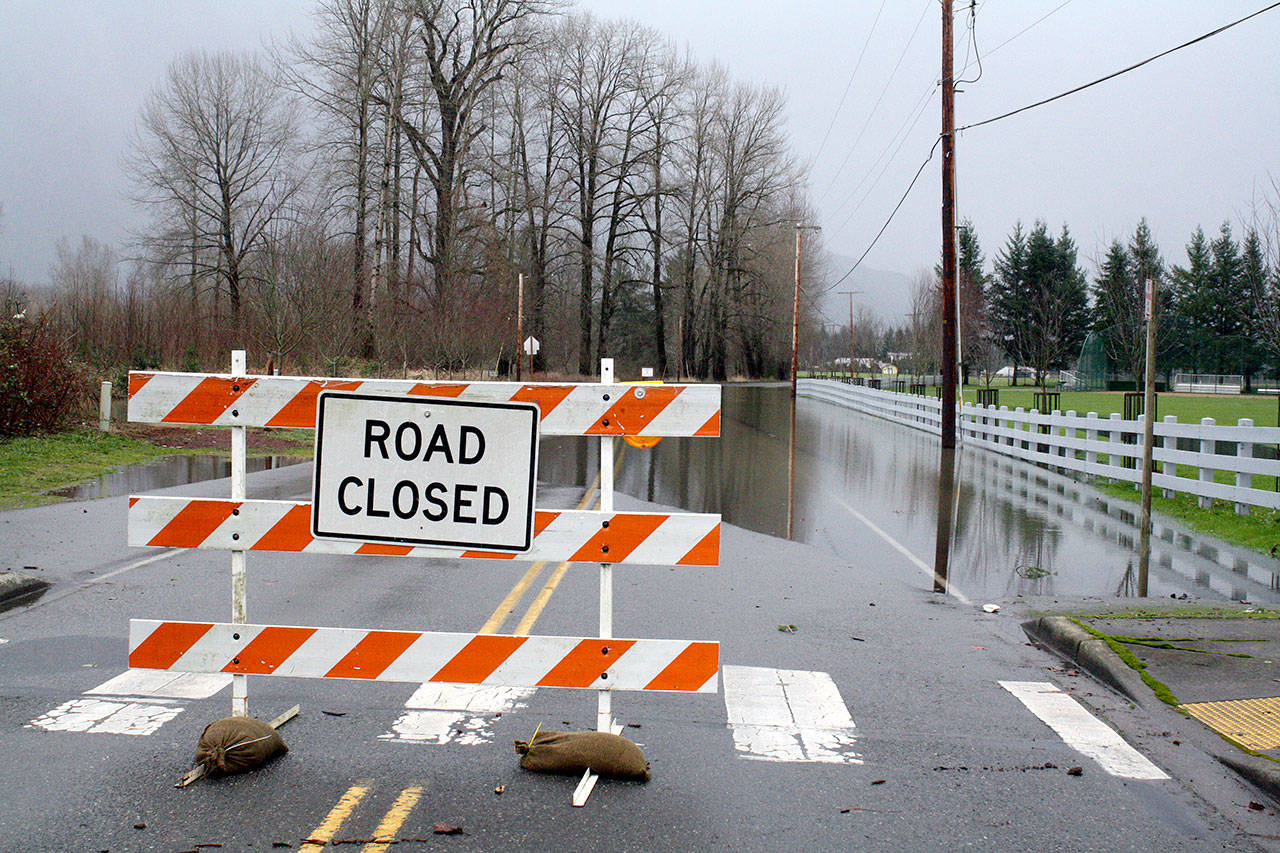As winter approaches in the Snoqualmie Valley, it is important to keep up to date on flooding preparation resources available to residents of the area.
According to a North Bend Floodplain newsletter, high water and flooding are most common from October to April due to periods of heavy rainfall and snowmelt. Several large structures throughout the region are located within the 100-year floodplain of the Snoqualmie River. Residents should be aware of the hazards and stay informed on river conditions to be prepared.
The King County iMap tool can be used to see the size of the floodplain and to see if your home is in the floodplain. Go online to http://gismaps.kingcounty.gov/iMap/, enable the Flooding Info layer to see the floodplain area in the county database.
To see real-time flood gauge statuses of the Snoqualmie River, visit http://www.floodzilla.com/river/snoqualmie.
If flooding does occur, a few simple precautions should be taken to maximize safety. The city of North Bend notes to turn off electricity and gas, avoid wading through moving floodwater, stay clear of stream banks and do not drive on water-covered roads.
Property protection measures noted by the city of North Bend include grading the yard, correcting local drainage problems, retrofitting and emergency measures like moving furniture and sandbagging.
The King County Flood Warning System is divided into four phases that provide residents anywhere from 2 to 24 hours of lead time before flooding hits.
The first phase is triggered when the sum of Snoqualmie Forks near North Bend is 6,000 cubic feet per second (cfs) and rising. That likely will result in lowland flooding but no transportation roadblocks.
Phase two begins at 12,000 cfs and some low-lying roads may be flooded.
Phase three is when the river hits 20,000 cfs. Classified as major flooding, phase three could result in evacuation.
Phase Four is at 38,000 cfs or greater. The large-scale Snoqualmie River flood of 2009 was classified as phase four.
Both North Bend and Snoqualmie have flood protection information publicly available on their websites at northbendwa.gov/163/Flood-Protection-Information and www.ci.snoqualmie.wa.us/162/Floods-Storms.
On the Snoqualmie site residents can sign up for emergency alerts via email, text or phone. In addition to flooding, Snoqualmie also lists snow plow routes and the city’s snow and ice removal plan.
King County also lists flood services and information at www.kingcounty.gov/services/environment/water-and-land/flooding.aspx.


